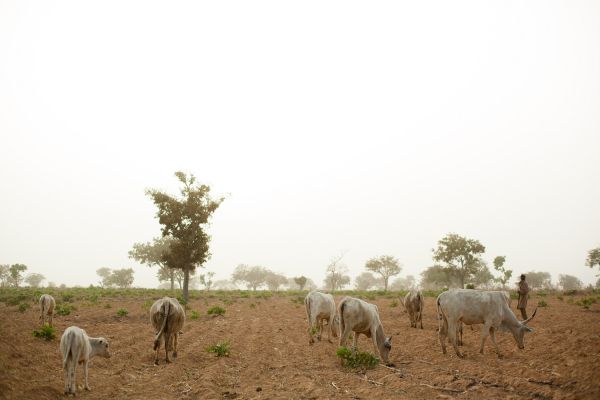



Author: Adedotun Adeite
Climate Change Adaptation Techniques-Climate change poses major challenges to global farmers due to extreme events like floods, heatwaves, and droughts. These events endanger both food security and the livelihoods of about 80% of the world’s rural population, who rely on farming. The persistent impact of climate change on communities and the environment emphasizes the necessity for farmers to adapt to adverse effects, including reduced crop yields, soil degradation, lower nutritional quality of major crops, and decreased livestock productivity.
Here are some effective climate change adaptation techniques that farmers can implement:
Crop Rotation:
Crop rotation means planting different crops in successive seasons on the same land, enhancing depleted soil nutrients due to climate change. Adding cover crops to rotations helps curb wind and water-induced soil erosion through their protective role.
Planting Trees:
Planting trees benefits farms and the global environment, acting as windbreaks, shading crops, and combating desertification. Trees store carbon, release oxygen, and mitigate climate change.
Mulching for Plant Cultivation:
Mulching involves the application of a protective layer of materials, such as organic matter (leaves, grass clippings, wood chips, bark), to the soil’s surface around plants.This technique shields plant roots from extreme heat, cold, or drought, particularly during climate change-induced heatwaves. Organic mulches also enhance soil quality as they decompose, promoting plant growth.
Soil Fertilization:
Climate change modifies soil conditions by altering moisture levels, increasing soil temperatures, and elevating carbon dioxide levels, all of which reduce soil fertility and impact crop productivity. To counter these effects, farmers can apply organic fertilizers like animal waste, manure, compost, and food processing waste, along with judicious use of inorganic fertilizers, to replenish essential nutrients and sustain soil health.
Constructing Infiltration Pits:
Infiltration pits play a crucial role in preventing soil erosion caused by flooding, a common consequence of climate change. These pits collect runoff water, which can then slowly infiltrate and percolate through the soil layers to reach crops. By capturing and controlling runoff, infiltration pits help safeguard the topsoil and its nutrients from being washed away, preserving agricultural productivity.
In conclusion, adopting these climate change adaptation techniques can empower farmers to mitigate the adverse impacts of climate change on their farms, ensuring food security and sustainable livelihoods for farming communities.
Source: http://34.89.153.60/2022-climate-change-adaptation-techniques-for-farmers/


